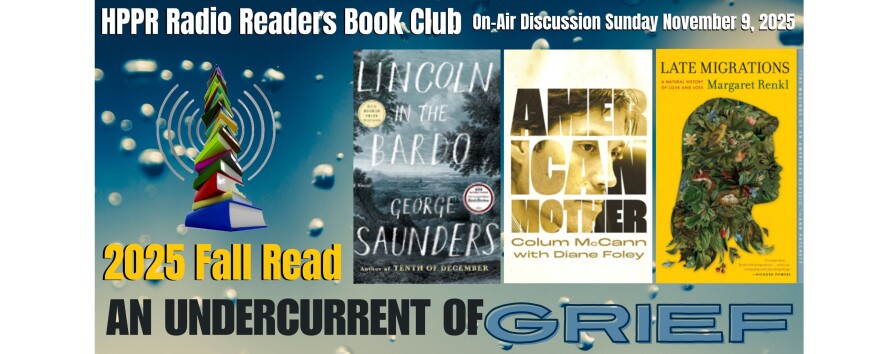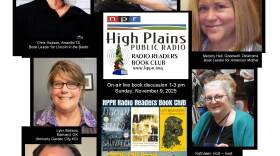This book may contain language, sexual content, and themes of grief and loss, which may be challenging for some readers. Reader caution advised.
Rambling Roses
by Chris Hudson
Hi, my name is Chris Hudson and I’m an English professor at Amarillo College. Welcome to the Fall Radio Readers Book Club. I’ll be talking today about Margaret Renkl’s Late Migrations: A Natural History of Love and Loss.
Early in Margaret Renkl’s beautiful Late Migrations she explains that “the shadow side of love is loss.” At times, that shadow is a dark, grief-stricken state, but more often than not, it is a companion, our closest ally in the inescapable cycle of life and death. Renkl makes her case for the shadow the same way she does the light. The brief, lyrical narratives that make up the book cycle between people and places: Lower Alabama, great grandparents, Middle Tennessee, mothers and fathers, Colorado, children, and a misbegotten attempt above the Mason Dixon line in Pennsylvania.
Besides places, we alternate between familial generations and the life cycles of birds, plants, dogs, squirrels, insects, seasons, and the sun and the moon. For a person with poor vision (a family trait), Renkl sees remarkably well because—and we should all take note of this—she looks.
Her backyard is a universe anchored by Dr. Van Fleet rambling roses whose ancestors were introduced into her great-grandfather’s yard in 1910. The roses are hardy, but susceptible to particular diseases, herbicides, and the changing climate. At one point they succumb to those threats, and she is left with nothing but a tangle of brittle thorns. All her “beloved elders” as she calls them were gone. The metaphor could not be sharper. Cutting away the dead roses, Renkl discovers a rambling rose she had separated from the others in a pot. Three years later, a cycle lasting 107 years, it blooms back to life.
Like rambling roses, Renkl propagates her family’s generational stories. She dismisses the notion of closure and making peace with death. She notes: “Here is what no one told me about grief. You inhabit it like a skin. Everywhere you go, you wear grief under your clothes. Everything you see, you see through it like a film.” Renkl’s success in this book is that she removes the film from our eyes, and like the exposed skin of grief, she prays that we recognize that “outward and outward and outward, in ripples that extend in either direction, we belong to one another. And also to this green and gorgeous world.”
The book is beautifully illustrated by her brother whose prints reveal many of the same thoughts her words do about nature, love, and loss.
In a world that has reduced the number of Monarch butterflies in North American in a matter of only 20 years from a billion to 93 million—casualties of herbicides and climate change--Renkl remains resilient, just as the Monarchs do, who take four to five generations to reach the final stop on their migratory cycle to Mexico. Renkl, too, has this deeply ingrained map of life encoded in her psyche. She admits that she at times “teeters between despair and terror, alarmed by the perils that threaten the planet” and she wonders if she can help.
She explains though that she is “good at astonishment.” Her lyrical sense is outfitted with muddy garden boots, dirt under her nails, and metaphors that help us understand that, for example, her children’s leaving the nest is the same as her wrens, jays, and cardinals. This is a book for mothers, or maybe for Our Mother. The loving, harsh, creative, nurturing, grieving, cyclical, yet final force that is in our best interests to revere.
This book and Margaret Renkl do help. She made me fill my tiny backyard with pollinators, and she gives us all a maxim useful for reading, gardening, grieving, walking, and living: “Lean close,” she says, “Look at this.”
For HPPR’s Radio Readers Book Club, I’m Chris Hudson. Thanks for listening.










